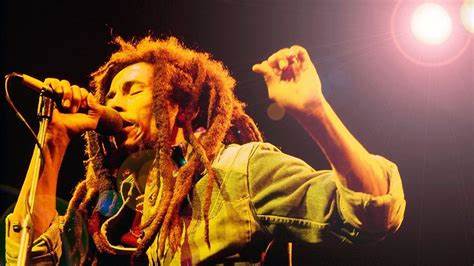Fifty years after his breakthrough album, ‘Catch a Fire’, Bob Marley is the latest megastar to receive the Hollywood biopic treatment, with a new film set to arrive in cinemas in January.
An enduring symbol of youthful idealism, a style icon and a songwriter whose music still resonates decades after his death, Marley’s flame continues to burn. "Look at that face,” says New York photographer Kate Simon, still apparently in disbelief, as she examines a black-and-white portrait of Bob Marley, smiling at something just up and out of shot.
It’s the one that she took by the side of the pool at the Sheraton hotel in Jamaica in 1976, that ended up on the cover of Bob Marley and The Wailers’ 1978 album ‘Kaya’, not to mention T-shirts and posters the world over ever since. “There’s no way… I don’t know… How can you take a bad photograph of Bob?”
Simon, certainly, never managed it. We’re looking through photographs selected from her seminal book, ‘Rebel Music: Bob Marley & Roots Reggae’, first published almost two decades ago and re-issued this month. Here’s Marley on stage at the Lyceum Theatre in London in 1975, the first time Simon photographed him, his fist raised and his eyes closed tight.
Here are his original bandmates, Peter Tosh and Bunny Wailer, photographed in Jamaica in 1976, alongside the other major players of the scene, including Burning Spear, Ras Michael and Lee “Scratch” Perry, dancing around his studio. Here’s Bob on the ‘Exodus’ tour of Europe in 1977, smoking weed backstage, kicking a football around a park, and cradling his guitar.
“We had a good rapport right from the very beginning,” says Simon, who first met Marley through a friend in London, before shooting him over the course of several assignments for music publications, record labels and newspapers. “I definitely felt at the time there was something really unique and compelling about him.
“He wasn’t showboating, there was just something where you wanted to be around him. And the concerts were magnificent. To see him in Berlin singing ‘War’, that was something unbelievable.” Simon was there in 1978, when, at the One Love Peace Concert in Kingston, Marley got prime minister Michael Manley to join hands with his bitter political rival — and later successor — Edward Seaga.
“I went to see him at his house the next day, and he was really pleased that he was able to pull that off,” she remembers. “I don’t understand why there aren’t more people who have a stage and use it, but there’s been nobody like Bob since.”
It was on the ‘Exodus’ tour that Marley sustained the football injury that would lead to the discovery of the acral lentiginous melanoma on his foot. It was the cancer that would lead to his death in 1981, at the age of 36.
Simon was there in Jamaica to photograph his state funeral, as the cortege drove from the National Arena in Kingston to Marley’s birthplace of Nine Mile, St Ann, and people poured down the mountainsides to see him pass. On the following pages, Simon talks through a selection of photographs from her book, which capture an incredible man at an incredible time.
And now Marley is in the ether again: it has been 50 years since the release of Bob Marley and the Wailers’ album ‘Catch a Fire’, their first for Island Records, which is re-released this month, and next year there’ll be a biopic, ‘Bob Marley: One Love’, directed by Reinaldo Marcus Green and starring Kingsley Ben-Adir. “It’s hard for me to talk about Bob because he’s so important to me,” says Simon, of revisiting a period that was formative in her own life, too.
“He was and has been a real source of consolation and strength, to me and to everyone. That’s why he’s so universally appreciated. His feelings and his ideas; his humanity and his intelligence.
“He was just a real gift, as a subject and as a person. He was one-of-one, Bob.”
The bookstore edition re-release of Rebel Music: Bob Marley & Roots Reggae by Kate Simon is out now (Genesis Publications)












